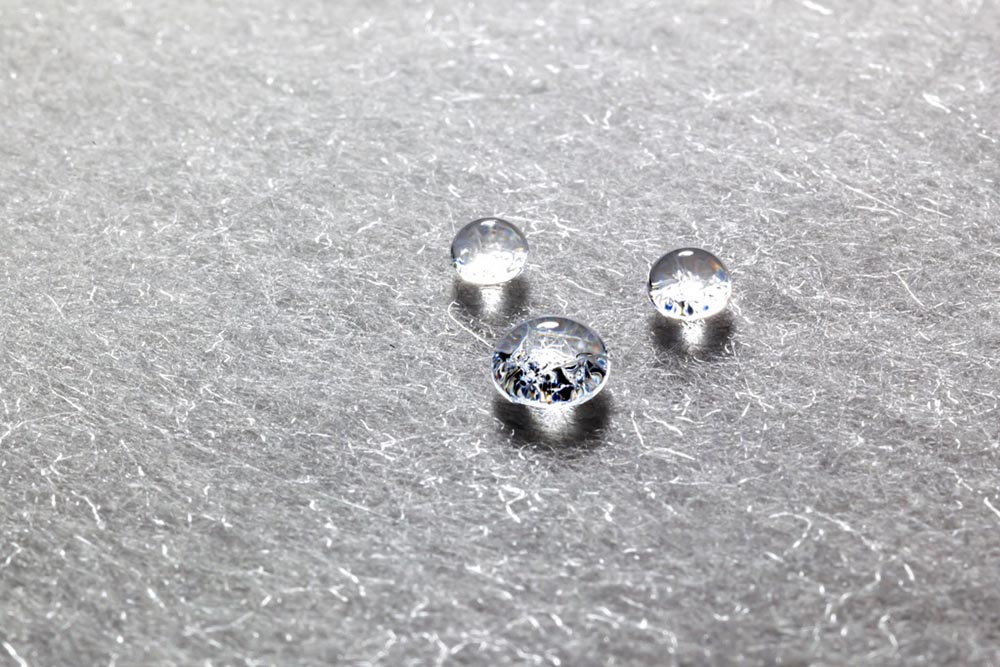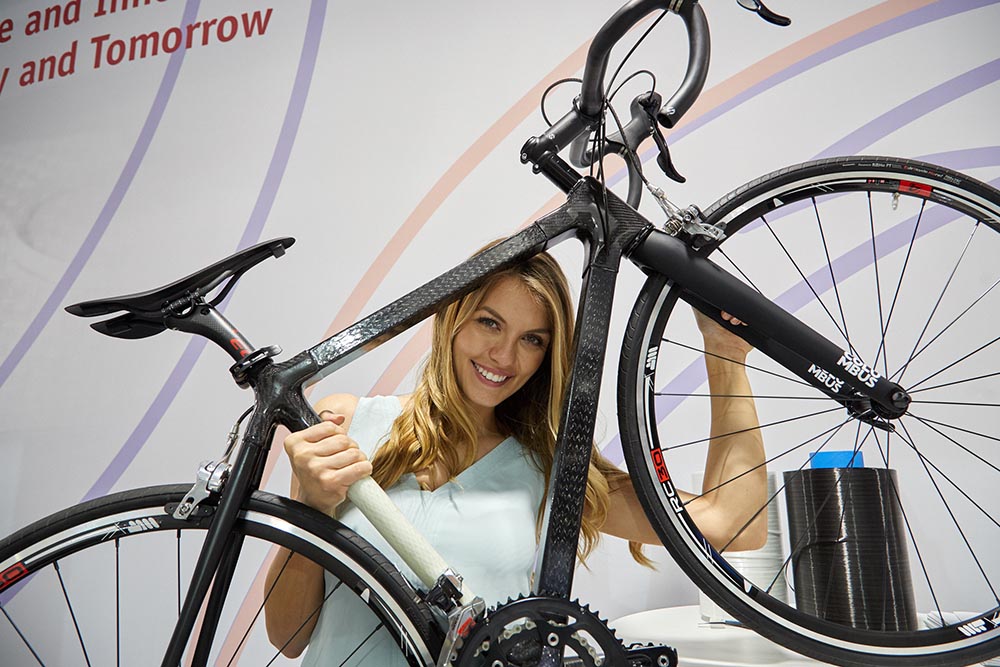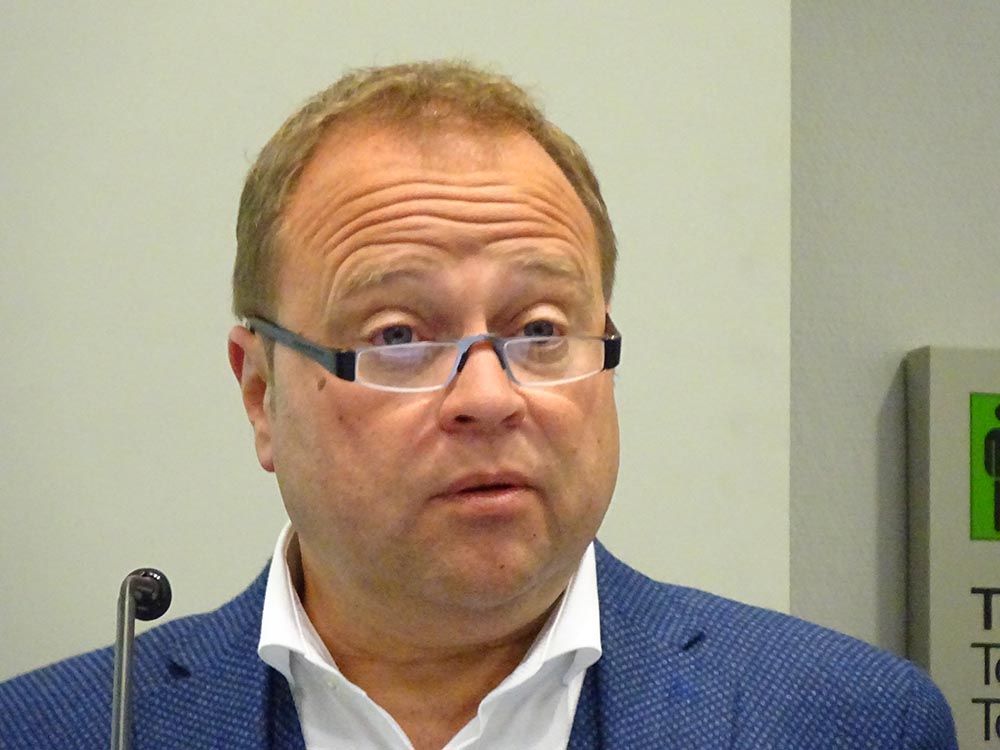
Over the past four decades the German/European manmade fiber industry has weathered many critical situations and has managed to survive. A key reason has been its ability to develop innovation and change management strategies.
Fiber producers are affected by global megatrends such as technological breakthroughs and demographic shifts on the one hand, and increasing protectionism affecting business worldwide on the other.
Meanwhile, the industry continues to face a strict regulatory and legal environment within the EU, and faces “unfair” competition from various countries, according to a key European association of fiber producers.
Stabilization
2016 was a stable year for the manmade fiber industry in Germany, Austria and Switzerland with an increase in production volume of 2.1%, reports the Industrievereinigung Chemiefaser (IVC) – the Association of the German, Austrian and Swiss Man-Made Fibres Industries.
Cellulosic fiber production increased by 2.3%, while synthetic fibers rose by 2%, explained Stefan Braun, IVC chairman and managing director of acrylic fiber producer Dralon.
Sales volume in 2016 was similar to the previous year. However, overall turnover has been declining steadily since 1991 and is not expected to grow in the future.
Similarly, employment in the sector has been on a downward trend, although the workforce grew by 1.4% year-on-year in 2016.
Exports/imports
Although the total production of manmade fibers continues to rise, Germany now has just a 1% of the global market.
The country’s exports of manmade fibers last year grew by just 0.3% compared with 2015, with synthetic staple fibers up 1.5%, synthetic filaments down 3%, cellulosic staple fibers +2.6% and cellulosic filaments +4.5%.
The key export destination was Western Europe (mainly other EU countries) accounting for 70% of exports, with 17% destined for Asia, such as China and India.
Germany’s imports of manmade fibers at 618,000 tons last year represented a rise of 0.9% compared with 2015, with synthetic staple fibers down 1.5%, synthetic filaments +3%, cellulosic staple fibers +6.6% and cellulosic filaments +1.1%.
Around 56% of manmade fiber imports came from Western Europe (mainly from the EU), with 41% from Asia (principally China and India).
Technical textiles now represent the largest application area for German manmade fibers, accounting for around 60% of total production in 2016, compared with 20% in the early 1980s; home textiles now represent around 30% with apparel 20%.

Decarbonization
In IVC’s view, the vision of an integrated European energy market is a positive move to balance the fluctuations in the electricity supply from weather-dependent energy sources and to create planning security.
“Yet the recent plans of the European Commission regarding the de-carbonization of the European economy scare many energy-intensive industries, manmade fibers included,” said the association.
“Moreover, the recent measures adopted by the German federal government to cut emissions by 80-95% by 2050 are very ambitious targets. Their impact and implications in terms of costs for the industry are difficult to predict.
“Germany’s contribution to the European climate and energy framework is remarkable. Yet its goals are in some cases far beyond the European ones.”

Energy costs
Speaking at this year’s Techtextil trade fair in Frankfurt am Main, Germany, Braun pointed to the high energy and transport costs in the EU, and Germany in particular, compared with rival manmade fiber producers such as Malaysia, Indonesia, Taiwan, China, South Korea, India and Vietnam.
There is also a wide variation in electricity prices within the EU, ranging from 5.6 euro cents/kWh in France in the second half of 2015 to 13.2 euro cents/kWh in the UK.
He added that the more favorable exchange rate of the euro versus the US dollar was beneficial to European exporters of manmade fibers.
However, there are danger signs for the European industry. “Despite repeated warnings, manmade fiber capacity continues to be added, particularly in China,” said Braun. “Many new projects are decided without sufficient market research, and access to finance is easy, often sponsored by governments in certain countries.
“Investments, as well as certain operating costs such as energy, raw materials and labor, and also exports are being subsidized.
“We believe in competition, but in fair and open markets. Excess capacity leads to low prices and poor profitability, encourages dumping and leads to market distortions.
“Such developments call for the restructuring of the mature fiber industry in future, not only in China, but worldwide.”

Success factors
Despite these issues, Braun explained that fiber producers could still be successful based on the following factors: technology, cost, quality, service, differentiation, product stewardship, vision and passion, and innovation.
The 20 member companies of IVC understand the needs of customers along the value chain, said Braun. “We are also accepted partners beyond the product supply. With innovative partners, we take on development projects right up to market entrance, both in textile and technical fibers.
“We offer technical support by visiting customers’ production and research and development (R&D) facilities free of charge, and we invest a fair proportion of our earnings into R&D and product development. We also actively use social media to address the final customer.”
Global megatrends
Braun pointed to a number of global megatrends:
- Internet culture and digitalization
- Traditional working, employment and entrepreneurial structures being redefined
- The challenging development of the global population and the trend to megacity urbanization
- Aggravation of resources and energy
- Gender roles undergoing change
- Major progress in medical and health care
- Continuing globalization versus continuing individualization
- Climate change and increasing awareness of ecology
- Changing markets and consumption patterns
- Increasing needs for mobility and logistics
- Increasing global risk patterns
- The knowledge-based society
An example of these trends affecting the fiber industry is decreased spending on travel in favor of homes and gardens, which could result in higher demand for textiles.
“Megatrends are a good reason to think about new products and services,” he said. “They provide clues to future customers’ expectations and what innovations will be needed to satisfy these.
Glass half full
“In summary, we believe the glass is half full, not half empty. We have a positive view of the fiber industry and are passionate about what we do and what we produce.
“In Europe, we have the best infrastructure in terms of a network for innovation, such as universities and textile institutes, with proximity to and contact with these institutes that are driving the products of tomorrow in view of these megatrends.”
Techtextil innovations
The Techtextil event highlighted many innovative products developed by manmade fiber producers in Germany, Austria and Switzerland, he said. These included:
- Olea, a fully biodegradable viscose fiber from Kelheim Fibres for use in diapers, sanitary towels and incontinence pads.
- Bramante hollow viscose fibers from Kelheim Fibres for hygiene applications and washable incontinence products.
- Fine polylactic acid (PLA) monofilaments from Monosuisse for food applications, as well as PLA monofilaments for industrial, geotextile, agriculture and textile applications.
- Enka Tec-Tape hybrid rovings from PHP Fibers for the automated production of fiber reinforced composites.A Trevira mélange yarn from recycled polyethylene terephthalate used for fabric from Trevira/Strähle+Hess, as well as fibers for the food industry, such as coffee pads, from Trevira.
For more information contact:
Industrievereinigung Chemiefaser eV
Tel: +49-69-2799-7130
Email: ivc@ivc-ev.de
Website: www.ivc-ev.de


